During my recent vacation to Pawleys Island in South Carolina, I’ve been able to visit Brookgreen Gardens, which is one of my favorite attractions in the area.
I was particularly eager to visit “Flights of Passage: Migratory Waterfowl of the Lowcountry,” which is the latest habitat to be added to the Native Wildlife Zoo and Domestic Animal Exhibit at Brookgreen Gardens in South Carolina.
“Flights of Passage” joins the popular Cypress Aviary, an enclosed habitat housing several species of wading birds, such as Black-crowned Night-heron, Great Blue Heron, Snowy Egret, White Ibis and Cattle Egret.
Among the waterfowl on display in the “Flights of Passage” habitat are Wood Duck, Redhead, Blue-winged Teal, Ruddy Duck, Hooded Merganser, Northern Pintail, Black-bellied Whistling Duck and Fulvous Whistling Duck.
The Fulvous Whistling Duck, also known as Fulvous Tree Duck, breeds across the world’s tropical regions in Mexico and South America. It is a widespread duck, ranging across four of the world’s continents. This duck has also expanded its range into the West Indies and into the southern United States.
The Black-bellied Whistling Duck, formerly also called Black-bellied Tree Duck, is a whistling duck that breeds from the southernmost United States and tropical Central to south-central South America. In the United States, it can be found year-round in parts of southeast Texas, and seasonally in southeast Arizona and Louisiana’s Gulf Coast. It is a rare breeder in Florida, Arkansas, Georgia, Tennessee and South Carolina. In the wild, this duck usually forages for food at night.
The Ruddy Ducks, especially the male with his bright blue bill, wins many fans among visitors to “Flights of Passage.” The Ruddy Duck is a native of North America, but can also be found in South America along the Andes Mountains. This duck belongs to a family known as the “stiff-tailed ducks.” These ducks migrate to avoid the colder winter conditions, usually spending the winter months on coastal bays or unfrozen lakes and ponds.
The Wood Duck, also known as the Summer Duck and the Carolina Duck, is one of the few ducks that breeds in the southeastern United States. It is a cavity-nesting bird and will accept nesting boxes provided by humans. Males, or drakes, are considered among the most colorful of North American waterfowl. The Wood Duck is one of two ducks in the genus Aix. Its only close relative is the Mandarin Duck of East Asia and Japan.
The Redhead is a species of diving duck that nests on prairie wetlands across the United States and Canada. It belong to a family of ducks known as “pochards,” which are adapted to foraging underwater. While the Redhead can be legally hunted, the federal government has in place restrictions on the number that can be taken during a hunting season.
The Northern Pintail is a duck with a wide geographic distribution. Pintails breed in the northern areas of Europe, Asia and North America, but this waterfowl is migratory and winters south of its breeding range to the equator.
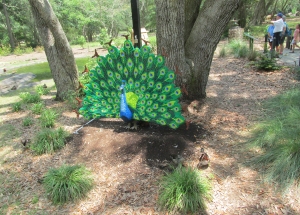
This Lego sculpture of a peacock is located in the waterfowl habitat as part of the “Nature Connects” exhibition.
The Hooded Merganser, according to the website All About Birds, are excellent divers and can catch numerous aquatic insects, crayfish, and small fish. Males court females by expanding their white, sail-like crests and making very low, gravelly, groaning calls. Hooded Mergansers fly distinctively, with shallow, very rapid wingbeats. Like the Wood Duck, the Hooded Merganser is also a cavity-nesting bird.
Since March 5, visitors to the zoo have also been able to see 12 larger-than-life LEGO® brick sculpture installations in the Native Wildlife Zoo. Created by Sean Kenney, renowned artist and children’s author, “Nature Connects” is an award-winning exhibit currently touring the country. The exhibit is open daily and is included in garden admission through Sept. 5.
Made from almost a half million LEGO® bricks, the sculptures bring nature to life with a six-foot tall hummingbird hovering over a trumpet flower, a deer family made from 48,000 bricks, a giant tortoise, a seven-foot-long giant dragonfly, a bird bath attracting cardinals, bees and a squirrel and much more.
The exhibit features interpretive panels with an educational message for each sculpture to connect children with the natural world and promote conservation.In addition, there are educational activities such as a LEGO® sculpture building contest, scavenger hunts, and 30,000 LEGO® bricks available for guests to play with when you are here.
Other animals displayed throughout the Native Wildlife Zoo are Great Horned Owl, Turkey Vulture, Bald Eagle, Red-tailed Hawk, Barred Owl, River Otter, American Alligator, Grey Fox, Red Fox and White-tailed Deer.
The grounds and walking trails of Brookgreen Gardens also offer birding opportunities. In the early summer months, visitors can observe Prothonotary Warbler, Common Yellowthroat, Yellow-billed Cuckoo, Great Crested Flycatcher, Brown Thrasher, Brown-headed Nuthatch, Red-headed Woodpecker and many other wild birds.
Brookgreen Gardens is a National Historic Landmark and non-profit organization located on U.S. 17 between Murrells Inlet and Pawleys Island. For more information, visit the website at http://www.brookgreen.org or call (843) 235-6000.
According to the attraction’s website, the Native Wildlife Zoo has been an important element of the mission for Brookgreen Gardens since its inception. It is the only zoo accredited by the Association of Zoos and Aquariums on the coast of North and South Carolina. The AZA is America’s most respected organization for zoos and aquariums. All of the native animals in the Native Wildlife Zoo were either bred and raised in captivity or have sustained a major disability due to injury. In either case, these animals could not survive in the wild.

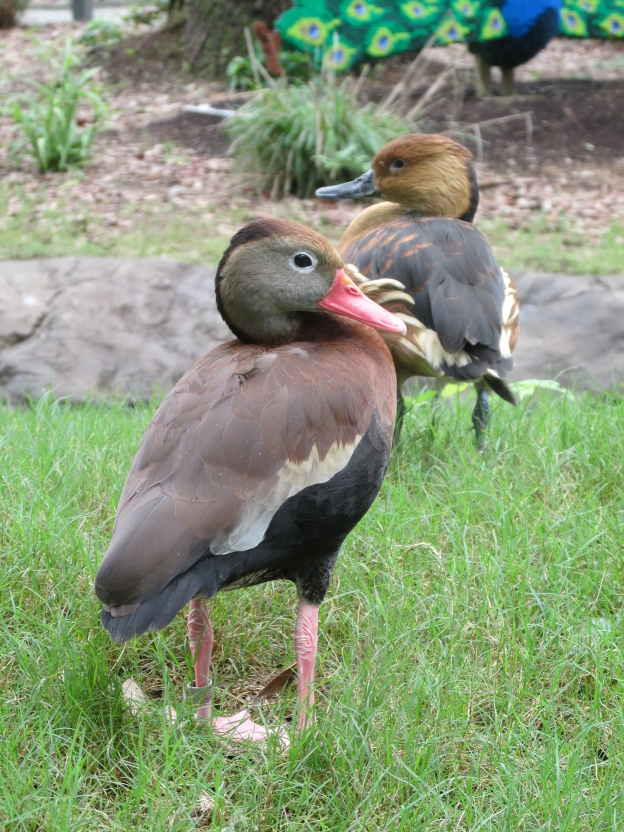
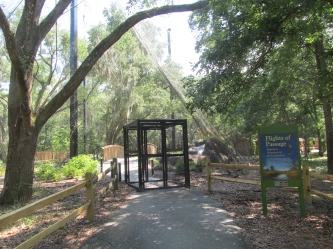

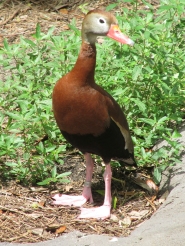
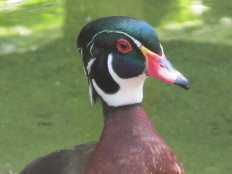


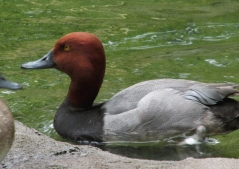


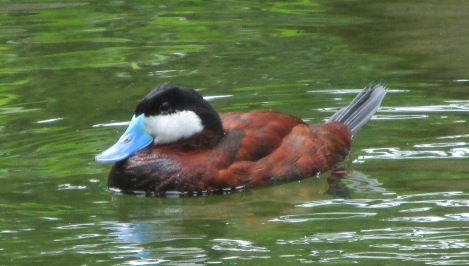








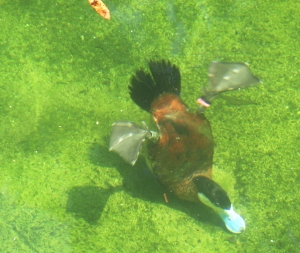
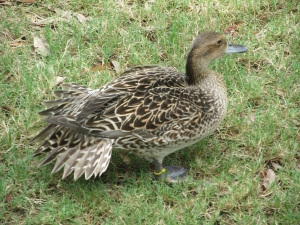

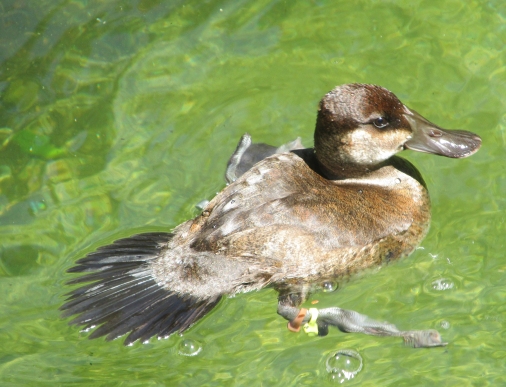
Great duck pictures!
LikeLike